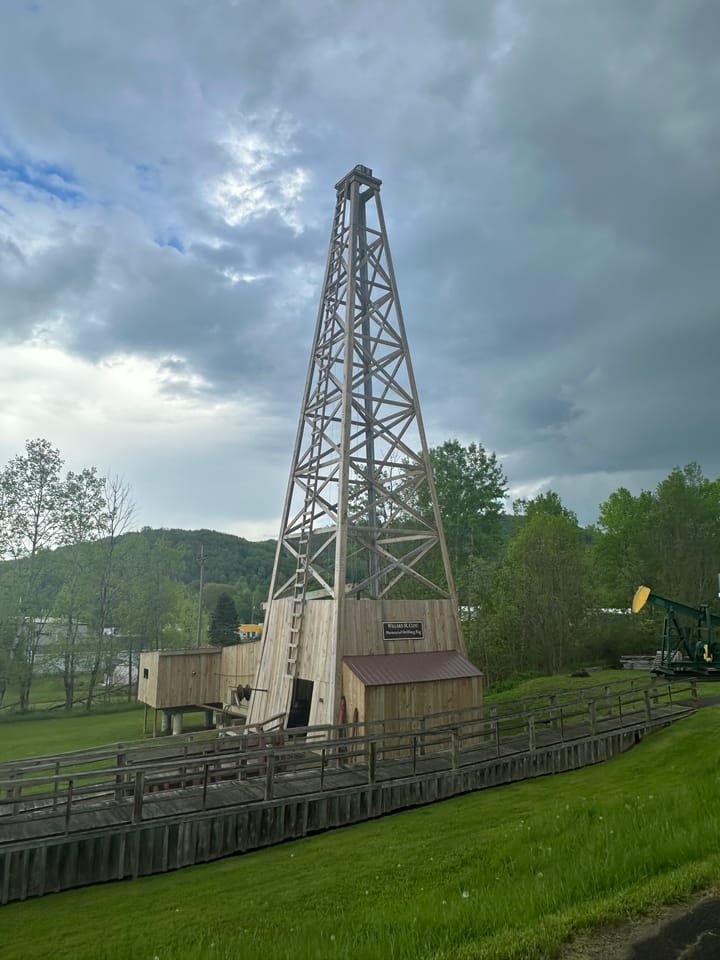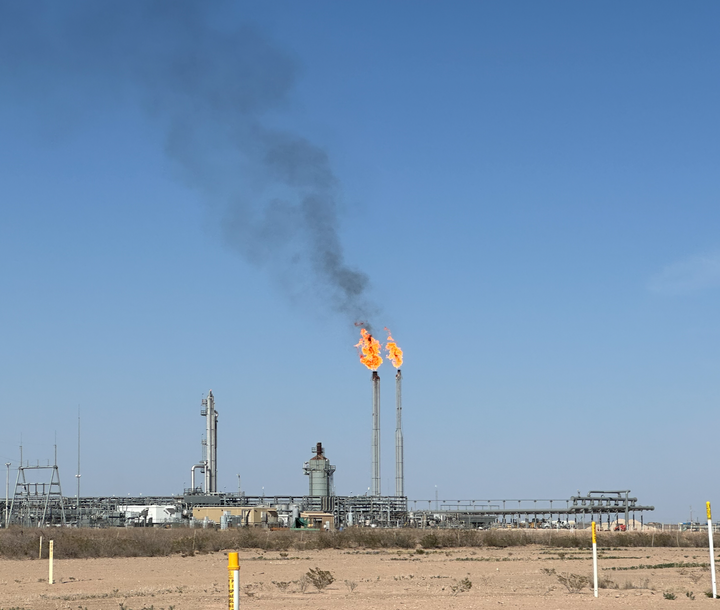Shale Oil Fraud Case Reveals Executives Ignore Their Own Engineers and Mislead Investors

In April, a judge ruled that a lawsuit filed by former investors in the shale oil company Alta Mesa could proceed. Their case alleges multiple instances of fraud and reveals that not only did engineers in the company warn executives that they were lying to investors about oil production estimates but that executives went on to ignore those warnings.
Alta Mesa is among a string of oil and gas companies that in recent years have either been accused or found guilty of fraud, including ExxonMobil and Miller Energy.
Many of these emerging fraud cases show a consistent pattern of employees warning leadership that they were misleading investors about how much oil the companies could reasonably produce in the future, but rather than changing course the employees were ignored or fired.
This scenario is repeatedly playing out in the shale oil and gas industry where the people who are paid to estimate how much oil is in the ground — the petroleum engineers — are told their estimates are not high enough, and executives then claim more optimistic numbers instead.
‘This is a Lie’
Most cases of oil industry fraud involve a simple concept. Oil companies are able to raise money based on how much oil they say is in the land they own — that’s known as oil reserves. The higher the value the company claims for its reserves, the more money it can borrow or attract from investors.
These fraud cases are very similar to housing appraisal fraud. What some of these oil companies are doing is the equivalent of owning a house worth $250,000, telling the bank it’s worth $500,000, and then borrowing money based on that inflated value. These oil executives then pay themselves high salaries and often cash in large amounts of stock options, until the investors’ money runs out and it’s revealed that the overly optimistic oil reserves predictions were not true.
ExxonMobil is currently under investigation by the Securities and Exchange Commission (SEC) for overvaluing assets despite reports that employees disagreed with the valuations. There are also two separate whistleblower filings with the SEC that accuse Exxon of intentionally overstating the value of its oil and gas–producing properties by tens of billions of dollars.
In January, the Wall Street Journal reported on the case that spurred the SEC investigation and reportedly resulted in the firing of at least one ExxonMobil employee, who later filed one of the whistleblower complaints. According to that complaint, an employee who was pressured to redo oil well production forecasts numbers to make management happy reportedly named a file with the inflated numbers, “This is a lie.”
According to the Wall Street Journal, this whistleblower noted the widespread internal pressure to support the CEO’s unrealistic claims for potential oil production from its acreage in the Permian region, a top U.S. oil field.
“No one I knew in the organization thought this was possible; the pressure to deliver on Woods’s promise to the market permeated the organization,” the whistleblower said, referring to ExxonMobil CEO Darren Woods’ goal at the time to produce one million barrels a day from the Permian by 2024.
In March, Exxon decreased its forecasts for Permian production and now expects to average 400,000 barrels per day in 2021 and potentially reach 700,000 barrels per day by 2025. A new report from the Institute for Energy Economics and Finance (IEEFA) notes that Exxon has not made money on its Permian operations and that according to IEEFA analyst Clark Williams-Derry, “Investors should place the company’s Permian plans under a microscope and demand better disclosure of both its financial and operational results in the region.”
As DeSmog recently reported, the management of Fairmount Santrol (since renamed Covia) also was warned by its employees that it was lying to investors. At the time, in 2017, Fairmount was the largest frac sand company in the U.S. As Bloomberg reported in November 2020, Fairmount employees met with management in May 2017 to convey concerns about fraudulent product claims. Management not only ignored the concerns, they told the SEC in 2019 that they had “fully investigated issues that were raised by employees” and had found no fraud. The SEC has since settled charges against the company for misleading investors.
DeSmog also recently covered a case of fraud involving the now-defunct oil company Miller Energy Resources and major auditing and accounting firm KPMG. In 2017, both settled the charges of overvaluing oil assets with the SEC, which found that at least one engineering firm refused to put its “name on a report that implies value exists where it likely does not.”
Again and again, evidence is surfacing across the fracking industry that shows companies have been overstating oil reserves and making unrealistic claims to investors. As the Wall Street Journal reported in 2019, “Two-thirds of projections made by the fracking companies between 2014 and 2017 in America’s four hottest drilling regions appear to have been overly optimistic.” Indeed, the shale industry has lost hundreds of billions of dollars.
DeSmog has reported on this issue of oil reserves overestimates and the research that further highlights how pervasive it is in the U.S. To try to continue to lure investors, oil companies have been promising results that aren’t possible to deliver. While some refer to this as the industry being “optimistic,” when executives know that the optimism conflicts with their own employees’ assessments but tell investors otherwise, it’s fraud.
And the case of Alta Mesa is a prime example of how this happens.
‘Defendants overstated the value of the assets’
In March 2020, DeSmog reported on apparently fraudulent behavior that led to the quick bankruptcy of oil and gas company Alta Mesa, less than two years after it started in the oil business.
A month later, investors filed a lawsuit against Alta Mesa executives alleging multiple instances of fraud over its oil reserves numbers. The main claim of the lawsuit is that “defendants overstated the value of the assets.”
The 125-page filing details the many apparently fraudulent claims that Alta Mesa made and cites company engineers who claim they specifically warned management that what they were telling investors was not true.
One common way for companies to overstate oil reserves (or the value of their assets) is to simply use models that overestimate average oil well production — a number commonly referred to as the estimated ultimate recovery (EUR). According to the lawsuit, Alta Mesa management referred to inflated numbers from these models even after engineers refused to provide those numbers themselves.
A second way to overstate reserves is to say the acreage will support far more wells than it can realistically. The lawsuit against Alta Mesa notes that by claiming its acreage could support a much higher number of wells than the data suggested, the fracking company could “claim purported reserves that were double the actual recoverable reserves.” (Emphasis in the original)
According to the lawsuit, a senior production engineer reported that upon hearing that Alta Mesa executives were telling investors the company had 4,200 drilling locations, the team “fell out of our chairs laughing” and were “absolutely flabbergasted” and “astonished.”
The lawsuit details many other ways the management of Alta Mesa allegedly misled investors, and on May 17, 2019, Alta Mesa announced it was being investigated by the SEC for its financial reporting. According to the investor lawsuit, on that same day, Alta Mesa also announced “that the estimate of proved reserves it released on February 25, 2019 was overstated.”
Its updated reserves dropped from 158 million barrels to 69 million barrels — a more than 50 percent decrease. Facing this new reality, Alta Mesa’s final announcement that day was that it was exploring bankruptcy. Without those inflated oil reserves, the company was apparently worthless.
‘Era of Non-Enforcement and Paltry Fines’
As DeSmog reported in March 2020, Alta Mesa’s management was some of the most seasoned in the industry and the company had the backing of a large private equity firm. Why would industry experts resort to fraud with a brand new company? One possible motivation is money. The way that Alta Mesa was formed included huge financial incentives for management if the stock price reached certain levels.
The investor lawsuit highlights the incredible payout for management that would occur if Alta Mesa’s stock reached certain price levels, as well as how little personal risk it involved. As the lawsuit stated, it was an “opportunity to unlawfully profit by over $301 million on investments that carried a mere cost basis of $25,000.” (Emphasis in original)
That is a lot of incentive to provide “optimistic” reserves estimates to boost the stock price — a reason why the SEC is investigating these types of corporate structures.
However, the penalties for this type of fraud are negligible. The SEC has settled with other companies guilty of oil reserves fraud which accepted small fines, in proportion to what investors lost, as punishment.
DeSmog asked attorney Kassie Siegel, director of the Climate Law Institute for the Center for Biological Diversity to help explain why the SEC does so little in response to major fraud cases in the oil industry.
“The SEC is emblematic of an industry-wide problem: the agencies that are supposed to be regulating oil and gas and protecting people and the environment from the industry are protecting the polluters instead,” Seigel responded via email. “The Biden Administration should end the era of non-enforcement and paltry fines at SEC.”
If the past is any indication, Alta Mesa executives have little to fear from the SEC investigation. It remains to be seen what will result from this investor lawsuit.
As the judge in this case recently noted, “the enormity of the write-down over such a short period of time is enough for the case against these defendants to proceed.” In 2018, Alta Mesa was valued at $3.8 billion when it formed, a number based on its potential to produce oil profitably. Less than 12 months later, the company wrote off $3.1 billion in value.
Over a year after DeSmog first profiled Alta Mesa, and asked whether the shale industry is based on fraud, the evidence continues to pile up. The question that remains for Alta Mesa — as well as others like Exxon — is just how big the difference is between the amount of oil in the ground and how much executives promised.
This article originally appeared at DeSmog.



Comments ()